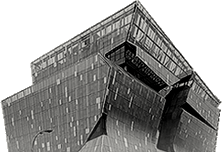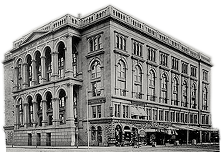What kind of artist do you want to be? Evan Bellantone
POSTED ON: March 22, 2019
Contemporary Art Issues is one of these big, broad topics that can feel challenging to pinpoint because of the sheer scale of the art on view in the city. This vastness can also be one of the great pleasures of seeing art in New York. One could do worse than to only visit the most famous and visible institutions, such as the MoMA or even the New Museum, but to get a good read on the temperature of art in the city sometimes requires going beyond the greatest hits. Scratching this surface just a little reveals the tremendous breadth of creative visions on display and I am continually pleased to find new venues, or more to the point, venues that are new to me that are dedicated to powerful visions that might not be found at the big-name institutions. Giving voice to the fascinating multiplicity of ways that art is expressed reveals that there are many ways to be an artist, which was a crucial theme we explored in the Summer 2018 CUSAI Contemporary Art Issues class.
What kind of artist do you want to be? is an important question for young artists beginning their studies in college as well, as for artists at any stage, because there are always new stories to tell. Different kinds of ideas, identities, histories and lineages are always evolving, and the venues we went to last summer reflected that the fabric of contemporary art is made and enhanced by this appreciation of various, and sometimes competing, ways of thinking. We looked at shows that presented art as a beautiful object, as a conceptual proposition, and as an expression of idiosyncratic vision asking what the relationship the artists themselves had to their social and creative environments.
Looking at these shows is important because they bring up the question of how artwork is made. Equally important, though, is who makes it, and the questions that surround the identity of the artist. For that we looked at shows of artists who defied a signature style in favor of making a number of deeply personal bodies work. Two provocative exhibitions in particular, one at a major museum and the other at a university, presented an unflinching eye at the pain and injustice surrounding the AIDS epidemic of the 1980s in the form of skillful paintings, stirring videos, and sophisticated graphic works. These shows asked “Why was this work made?” From this we extrapolated “What are some of the responsibilities of artists at the present moment? Do some ideas dominate the art world today or is that a thing of the past?” The challenges posed by these exhibitions were well matched by the careful attention and insightful comments of the CUSAI students, many of whom will soon be in art school themselves exploring all of the creative outlets offered to them. This spirit of openness will serve them well as they debate the questions that are relevant to the expanding and curious art environment of New York City.











